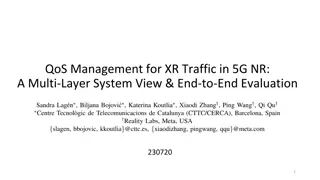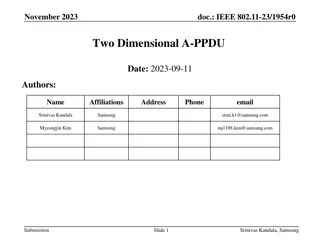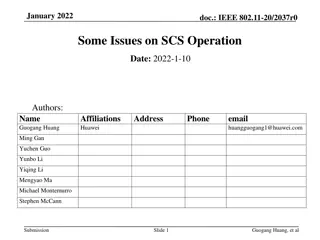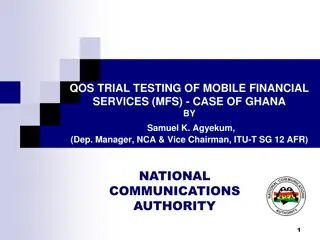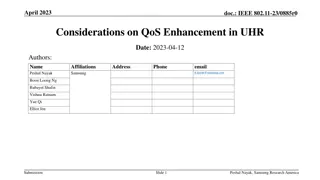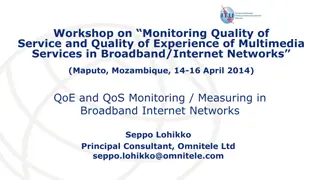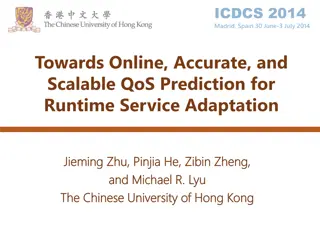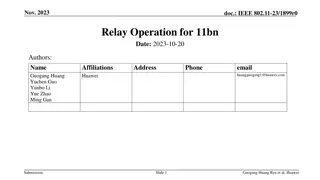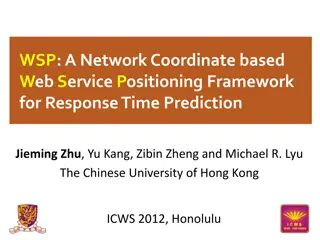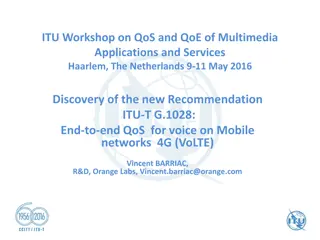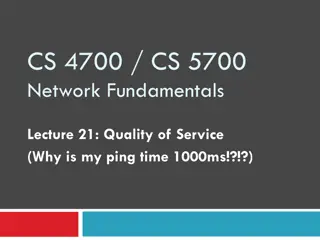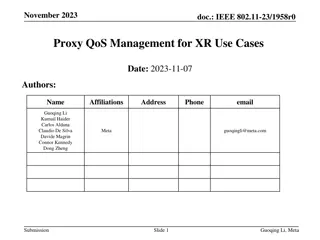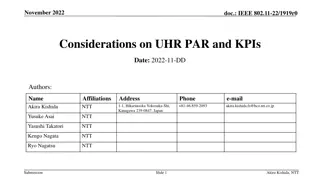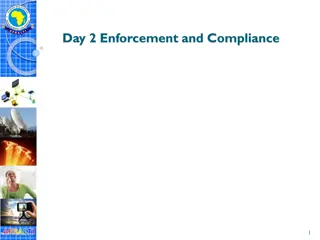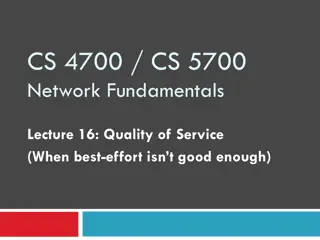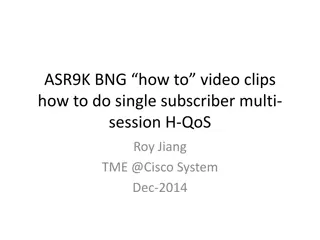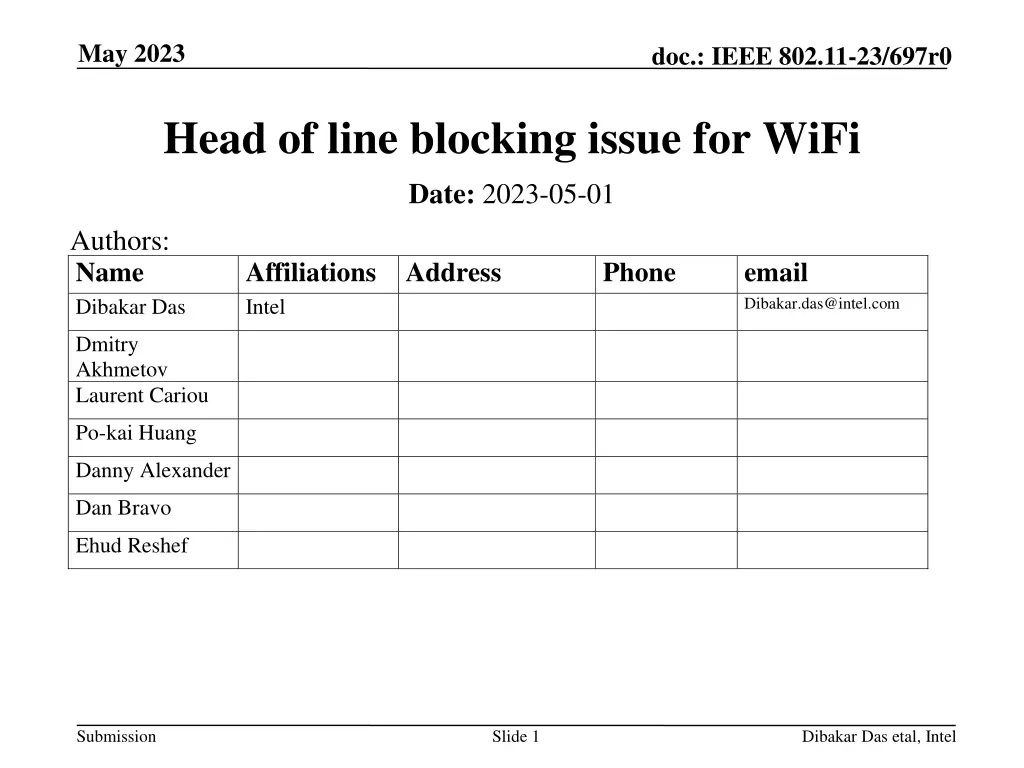
Resolving Head-of-Line Blocking Issue in WiFi Networks
Addressing the head-of-line blocking issue in WiFi networks caused by the in-sequence delivery restriction, this document explores proposals to allow out-of-order packet delivery for specific packet types. The discussion includes examples of scenarios, encryption mechanisms, and a call for a new approach to frame replay detection.
Download Presentation

Please find below an Image/Link to download the presentation.
The content on the website is provided AS IS for your information and personal use only. It may not be sold, licensed, or shared on other websites without obtaining consent from the author. If you encounter any issues during the download, it is possible that the publisher has removed the file from their server.
You are allowed to download the files provided on this website for personal or commercial use, subject to the condition that they are used lawfully. All files are the property of their respective owners.
The content on the website is provided AS IS for your information and personal use only. It may not be sold, licensed, or shared on other websites without obtaining consent from the author.
E N D
Presentation Transcript
May 2023 doc.: IEEE 802.11-23/697r0 Head of line blocking issue for WiFi Date: 2023-05-01 Authors: Name Dibakar Das Affiliations Address Intel Phone email Dibakar.das@intel.com Dmitry Akhmetov Laurent Cariou Po-kai Huang Danny Alexander Dan Bravo Ehud Reshef Submission Slide 1 Dibakar Das etal, Intel
May 2023 doc.: IEEE 802.11-23/697r0 Introduction The WiFi MAC typically is designed to provide in-order data delivery to upper layers. Packets are transmitted in increasing Sequence Numbers. Reorder buffer at recipient holds the received packets as long as there is a hole preceding it. In many applications the in-sequence delivery is desirable, and the current design works great. However, the in-sequence delivery restriction can also result in head-of-line blocking issue: a packet that s held in reorder buffer is not forwarded up if there is a hole. Sender needs to TX packets with lower SN before it can TX one that s higher. Since improving peak latency is key goal for UHR, in addition to channel access improvements, we should also look at resolving the head-of-line blocking problem. Submission Slide 2 Dibakar Das etal, Intel
May 2023 doc.: IEEE 802.11-23/697r0 Example scenarios STA is transmitting frames belonging to multiple SCS streams that happen to map to same TID. Note: it is possible for transmitter to group packets based on flow and intelligently assign SN. However, once there is a hole, all following frames are held up even if they belong to different flows which could affect latency performance. STA is transmitting frames belonging to different QUIC/SCTP streams that belongs to the same connection. Note: QUIC protocol already has mechanism to ensure in-sequence delivery by handling this at application layer => not always necessary to repeat it again. A STA is txmitting frames that map to TID x after assigning SN when it receives instruction to TX a high priority frame that also maps to TID x. Submission Slide 3 Dibakar Das etal, Intel
May 2023 doc.: IEEE 802.11-23/697r0 Recap CCMP/GCMP encryption for unicast frames PN space is shared across all TIDs. However, for each TID there is a unique counter that tracks the highest PN received so far for that TID. At transmitter side each MPDU is incremented using PN. At receiver side, Once a MPDU has been released from reorder buffer, the PN of that MPDU (RCVPN) is compared against the highest received PN (HRPN) for that TID; the frame passes replay check if RCVPN is higher than HRPN and HRPN value is set as RCVPN. Submission Slide 4 Dibakar Das etal, Intel
May 2023 doc.: IEEE 802.11-23/697r0 Proposal Allow the MAC-SAP to deliver out-of-order packets optionally for a subset of TIDs. Maybe limit to 1 or 2, may use only when a flow that can benefit from OOO delivery is established (i.e., following a corresponding SCS negotiation). This is similar to out-of-order delivery by PDCP in 3GPP. Frame replay detection: Today the in-order delivery sequence allows for easy frame replay detection (i.e., just check if the PN number is greater than last highest PN number). For out-of-order delivery, the frame replay detection needs to change (e.g., by maintaining a sliding scoreboard of PNs). Need a way to separate the PN space used by frames requiring OOO delivery vs ones that require IO. Submission Slide 5 Dibakar Das etal, Intel
May 2023 doc.: IEEE 802.11-23/697r0 Example out-of-order delivery procedure Originator Recipient Mgt frame BA scoreboard = 64 = PN window bitmap Data frame SN=11, PN = 51 SN=x, PN = 50 SN=x+63, PN = 113 113 50 51 hole PN window; max length: 64 51 113 114 BA hole PN window Submission Slide 6 Dibakar Das etal, Intel
May 2023 doc.: IEEE 802.11-23/697r0 Conclusion Propose to allow out-of-order delivery of frames at layer-2 without losing reliability provided by BA. The solution roughly involves using a sliding window bitmap based approach for replay detect of frames that can be delivered out-of-order. Submission Slide 7 Dibakar Das etal, Intel
May 2023 doc.: IEEE 802.11-23/697r0 Summary of overall proposal Proposed Rx STA behavior for TIDs with OOO delivery Baseline Rx STA behavior Maintain PN window bitmap. If rxed PN matches an entry, then detect replay. PN window updated to [last PN size, Last PN] Detect replay if received PN < Highest rxed PN for that TID; update counter for highest received PN for that TID. Replay Detection Per PN MSDU Flow Receiving Rx STA insert received MPDUs to a reorder buffer. Forward MPDUs up if there is no hole. Holes are moved on rxing a new MPDU or on BAR. BA Buffering and Reordering per SN Same as baseline except MPDUs are forwarded up even if there is a hole. MPDU Decryption Duplicate Detection per SN Rx STA maintains a per- TID scoreboard for MPDUs that were received or not based on SN Rx STA maintains a per- TID scoreboard for MPDUs that were received or not based on SN BA scoreboarding Submission Slide 8 Dibakar Das etal, Intel

